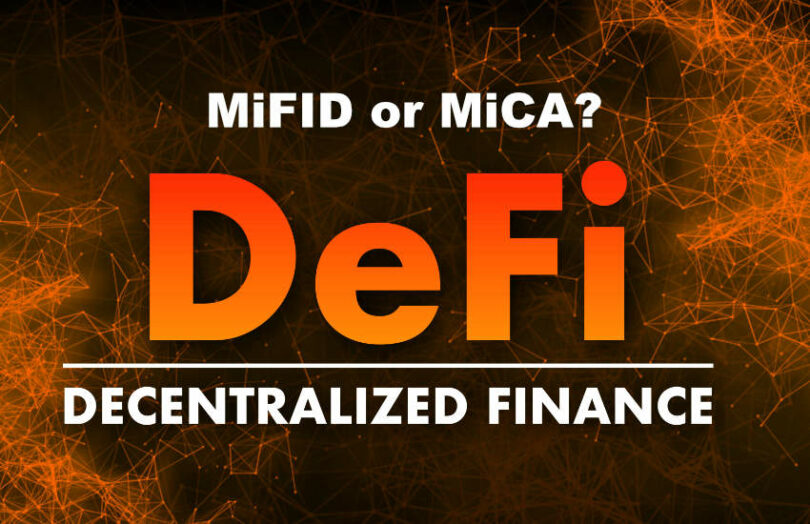Today the European Securities and Markets Authority (ESMA) launched two consultations relating to the MiCA crypto-asset regulations. One relates to third country firms offering services to EU residents. The other is the thorny topic of when a crypto-asset will be considered a financial instrument (under MiFID II) versus a crypto-asset utility token according to MiCA, which is a lighter touch. The consultation runs until April 29.
Last year, Europe passed its Markets in Crypto-Assets (MiCA) regulations. In contrast with the United States, Europe’s MiCA doesn’t consider most cryptocurrencies as securities. But it depends. Most utility tokens relating to layer 1 or layer 2 blockchains are likely to fall under the MiCA crypto regulations.
However, quite a few tokens issued by DeFi applications could be classified as financial instruments and fall under MiFID II. In that case, they require the issuer and instrument to be fully regulated.
One of the tricky things with MiFID II is that each country has implemented the legislation slightly differently. In addition to these differences across the EU, quite a few terms in the MiFID II legislation are not defined, leading to scope for debate, interpretation, and potential litigation.
The consultation states that “there is no commonly-adopted application of the definition of ‘financial instrument’ under MiFID in the EU. Whilst this issue has been noted as a concern since the implementation of MiFID/MiFID II, practical consequences may emerge with MiCA regarding the classification of crypto-assets as financial instruments.”
Financial instruments versus securities
In the United States, the question is whether or not a crypto is a security. In the EU, it is whether or not it is a financial instrument. That difference matters because a financial instrument is a larger group than just securities. In fact, MiFID II lists a range of instruments, including
- transferable securities
- money market instruments
- units in collective investment undertakings (funds)
- various derivative contracts
- emission allowances.
Here’s an excerpt from the draft guidelines: “The fact that a crypto-asset traces the performance of one or several underlying assets with the purpose of participating in price developments or those which would grant rights comparable to the right to acquire or sell transferable securities (like the right to acquire shares, bonds or similar transferable securities) should be viewed as a strong indication of being a financial instrument.”
Utility tokens should be fine. Many DeFi applications have tokens that might fall under the MiFID group. And some DAOs might be considered as collective investment schemes.






